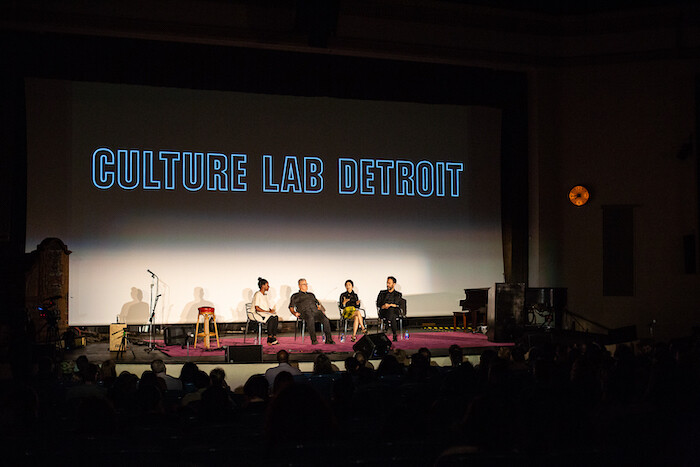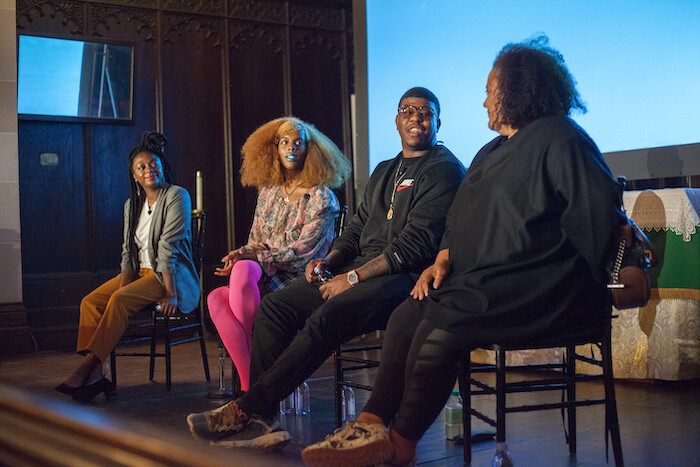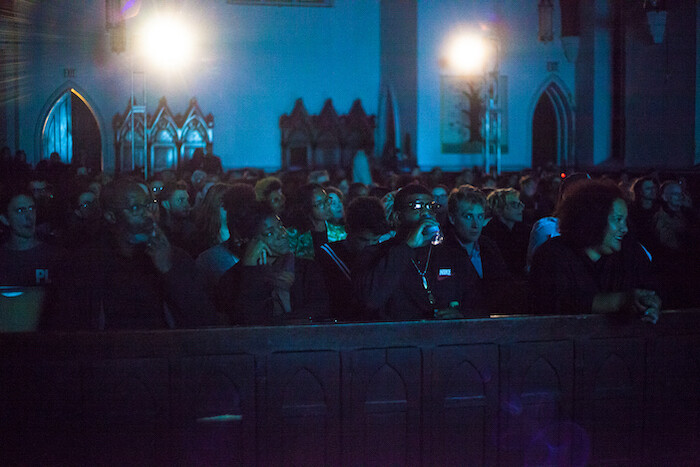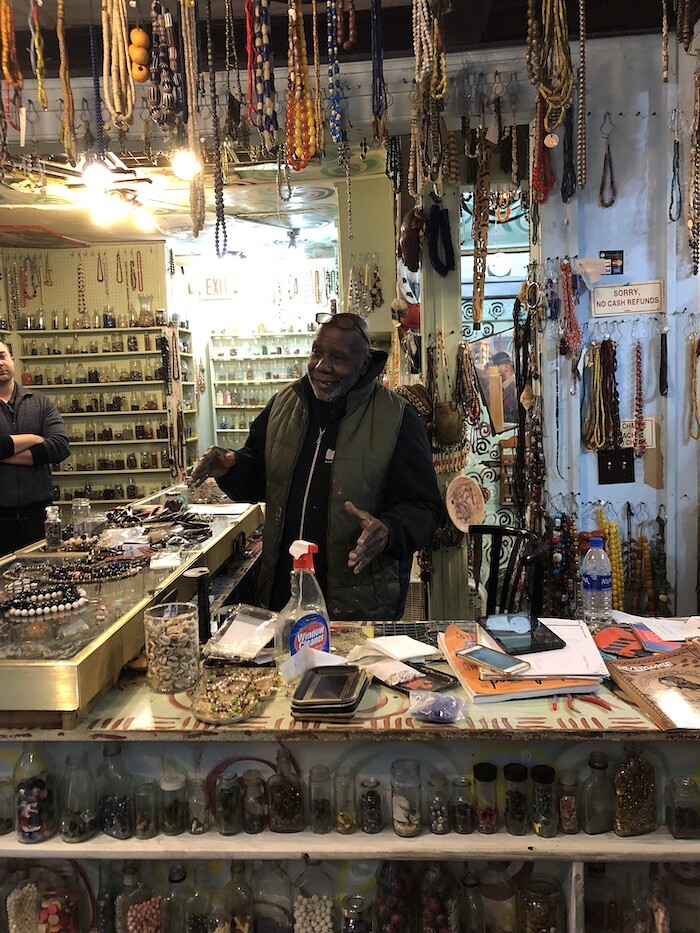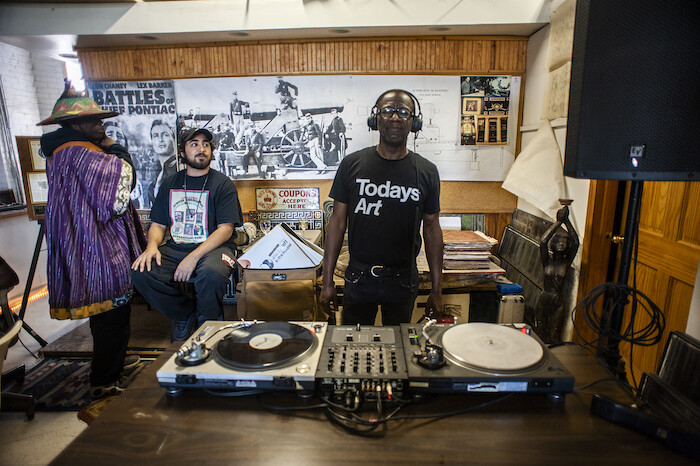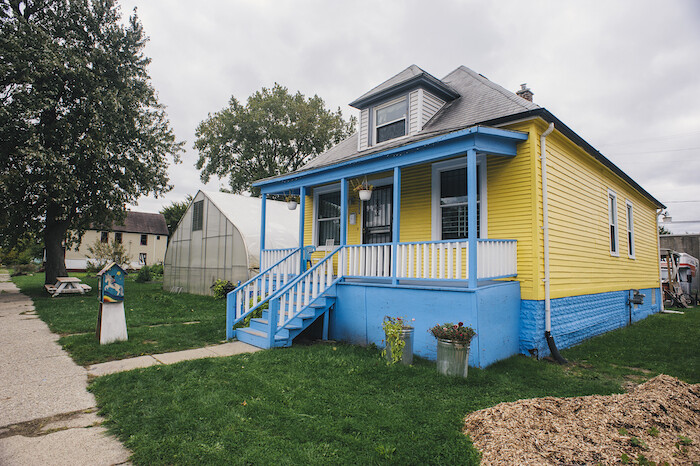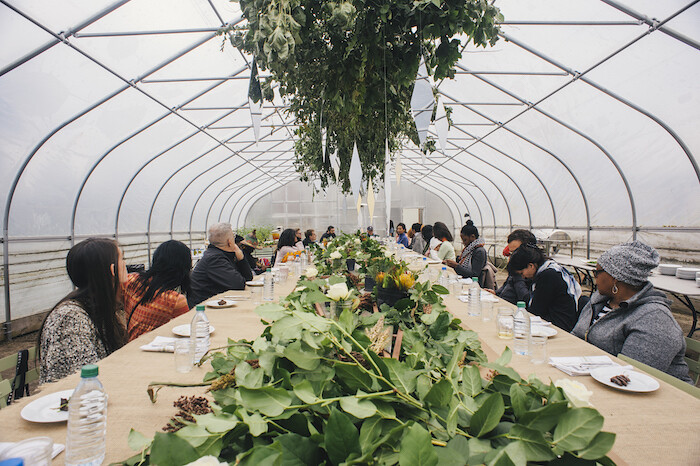In early October, I went to Detroit for the first time. I was invited on a press trip by Culture Lab Detroit. Positioning itself as a socially conscious arts organization, its annual conference hosts discussions at different sites throughout the city. This year’s summit was dubbed “The Crisis of Beauty,” which to me sounded like a hollow if catchy turn of phrase. While waiting for my Lyft at the airport, a huge Ford truck approached with a bright blue LED Uber sign in the windshield. The driver was a large white man wearing a camo Trump hat. It portended a weekend of strange, overlapping contradictions regarding the future of Detroit, the political fungibility of what is deemed beautiful, and who finds beauty where—especially within the industrial ruins of Midwestern American cities.
Much contemporary art operates on an axis of crisis capitalism, with the promise of revitalizing downtrodden places. The name Culture Lab is a bit sus, considering that Detroit has been revolutionizing culture for a long time. The first panel, “The Aesthetics of Tomorrow,” was held at the Senate Theater, in Southwest Detroit. With a burning-red marquis and rectangular art deco flourishes, the building is an old silent film theater from the 1920s, a curious setting for a conversation on tomorrows. It houses a giant Wurlitzer Opus pipe organ from 1953, and, on a wall at the back of the 800-seat house, there’s about a dozen images of players from the Detroit Theater Organ Society. The old photographs reminded me of a pre-reincarnation Jack Torrance smiling maniacally in the ballroom at the end of The Shining (1980).
“The Aesthetics of Tomorrow” started psychotically enough: Peter Weller, the star of RoboCop (1987) and a PhD in Italian Renaissance art history, shouted a short hyperactive lecture on why he loved Detroit. RoboCop’s premise was a prescient if outlandish one: a near-future Detroit is in ruins, municipal organs are sold to corporations, and a cyborg is plagued by its human memories. It’s not totally unlike Detroit’s bankruptcy in 2013—the largest municipal bankruptcy in US history—where power was given to an emergency manager so that debts could be settled and basic services restored, which came with the trimming of pensions and a significant influx of corporate cash and property.
“The Aesthetics of Tomorrow” included Mark Pauline of Survival Research Laboratories, artist Anicka Yi, and Eyal Weizman, the founder and director of Forensic Architecture. They talked with curator Yesomi Umolu, artistic director of the 2019 Chicago Architecture Biennial. Though a solid primer on the individual practices of the panelists, their talk followed the usual ritualized discourse: when it comes to the future, technology is both good and bad, and artistic practice is both critical and ineffectual.
The next day, Culture Lab brought us (the press) to Dabls MBAD African Bead Museum. The walls outside are festooned with colorful mosaics of broken mirror, wood, concrete, and other materials. Inside, a truly beautiful taxonomical galaxy: countless varieties of beads dangling on necklaces or housed in vials, colors from red-earth to azure to bright banana. Olayami Dabls, who opened the museum in 1985, works to illustrate how beads don’t only function as pure ornamentation, but have long been used in African material culture as means of communication. Outside the museum, there’s several huge outdoor installations that employ the detritus of industry and urbanity to explore notions of difference (“Iron Teaching Rocks How to Rust”), the history of the slave trade, and African languages. Less a crisis of beauty, more beauty in the face of crisis. Dots, symbolizing ancestors, are a common motif throughout.
We were then led on a tour of Oakland Avenue Urban Farm, which sits on several city blocks in a residential neighborhood in Detroit’s North End. Besides providing produce for the community, the group purchases homes lost to tax foreclosure, is turning an alleyway into a greenway, and organizes exhibitions and events to generate capital and joy. The farm—like Dabls’s expansive space—is a reminder of the trope that’s been driving the outside discussion of Detroit: there is plentiful cheap space, and the aesthetic of industrial ruin is in. These examples of local enfranchisement prove that no external savior is needed when it comes to economics or culture.
This sentiment rings clear through Detroit’s history as well. In addition to Motown, the city is the progenitor of techno, and there’s a nondescript house containing a museum dedicated to the genre and its vanguard group: Underground Resistance, formed by Jeff Mills, “Mad” Mike Banks, and Robert Hood. John Collins, a pivotal member of UR, graciously gave a two-hour tour of the museum. Humble vitrines trace techno’s origins: the merging of Parliament’s funk and Kraftwerk’s electronics; the sci-fi trans-genre gospel of local radio enigma The Electrifying Mojo; and the politicized aesthetic of anti-commercial futurity espoused by Underground Resistance, an aesthetic and ethic that flies in the face of contemporary mainstream DJ culture.
Later that afternoon, in advance of Culture Lab’s second panel, we went to filmmaker and critic dream hampton’s apartment in Lafayette Park—located within the largest collection of buildings designed by Mies Van Der Rohe—just east of Downtown. dream later told me how Lafayette Park, which used to house mostly black residents, is now largely white. Regarding the so-called new Detroiters who have come back, dream said: “People love to tell you how their grandmother lived in Detroit in the 1950s, or some caveat about how they were born here. What would be more honest would be to talk about the moment when their families fled, and how, when they were growing up, they were told to never come to Detroit. It doesn’t mean they or their parents are monsters, but it would be a more honest story about America.”
After dream’s we headed to the Church of the Messiah, a nontraditional episcopal church in Detroit’s East Side. The panel, titled “Seeing and Being Seen,” included dream, the artist, DJ, and writer Juliana Huxtable, and Jon Gray, the co-founder of Ghetto Gastro, a collective of chefs which he describes as a “Black Power kitchen.” Moderated by Jazmine Hughes, associate editor of the New York Times Magazine, there was a discernible chemistry among the participants, a mix of humor and engrossing discourse, and reflections on the struggles—but also the triumphs—of black, trans, and female communities.
Huxtable observed that social justice causes have entered a sort of fashion cycle: a season for black lives, a season for trans lives, etc. This cyclicality—perhaps a reflection of neoliberalism’s absorption of everything—can also be observed at the city level. For many who live outside the city, Detroit has been a metonym of danger and dystopia. Today the city is becoming synonymous with frontier, a place with ample cheap space waiting to be settled by non-resident entrepreneurs and artists. During the panel, Gray remarked how French people, upon hearing that he’s from the Bronx, will say that something is “Le Bronx” when it’s fucked up. Similarly, when dream says that she’s from Detroit, people wince. Detroit is nearly 85 percent black. When some people talk about Detroit being a dystopia, there’s an underlying white supremacist logic not being addressed, a history being smoothed over. The city was once the seat of Fordism, the pinnacle of standardized mass production. After deindustrialization, factories slid into ruin—so came the shadow of urban decay. Years of redlining and police violence led to the riots of 1967, accelerating “white flight” from the city, which, of course, translated to the flight of capital. But those who see Detroit as a no-man’s land just waiting to be developed, should take heed of dream’s words: This city is a place “with a black history, a black present, and a black future.”
Later that evening and into the early morning, Huxtable DJed at Olympus Hall, which is part of Menjo’s, the historic gay nightclub complex. Dancing into oblivion, I watched the red droplets of the disco ball on the floor, dots that recalled the ancestral beads at Dabls’s museum. The next day, bleary eyed, I visited the Heidelberg Project, a stretch of vacant lots and abandoned houses in Detroit’s East Side transformed into a series of massive installations by artist Tyree Guyton. Dots permeate this area too: There’s a small boat painted with colorful dots and crosses, overflowing with stuffed animals; enchanting paintings of shoes and dots nailed to trees; dots large and small painted on houses, alongside repetitions of the word “YOU.” Is this a universal addressee, or some group in particular?
In one lot, the foundation of a house is all that remains of the structure. Atop it, surrounding the chimney jutting toward the sky, there are countless objects strewn together: toy wheelbarrows and kids’ cars, a jet ski with mannequin legs, a giant moose head—the flotsam of American existence, memories embodied in consumer goods, collected together at a home that no longer is, and yet, remains to be. As I walked around this truly public collection—in all senses of the word—my soul was stirred. The premise of “The Crisis of Beauty” begs the question. There is no crisis of beauty, just crisis.
